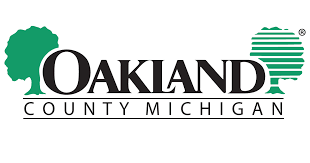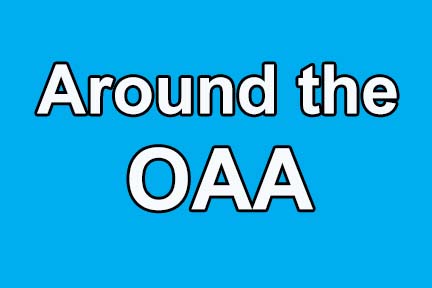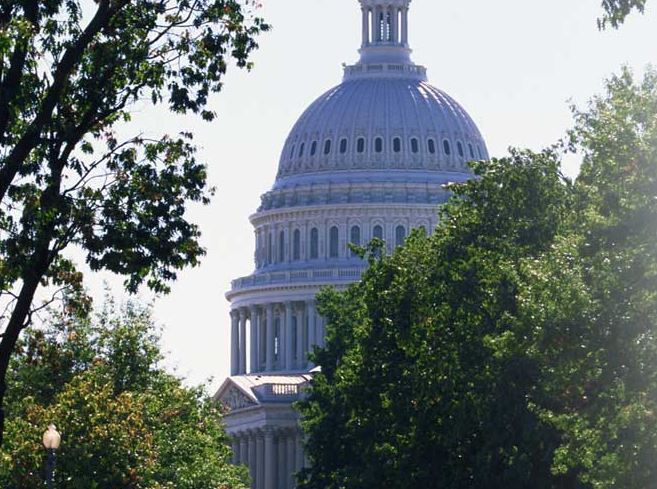
by Becky Andrus | Mar 17, 2022 | Regional News

Media contact:
Lynsey Mukomel
517-599-2746
FOR IMMEDIATE RELEASE:
Thursday, March 17, 2022
AG Nessel Shares Scam Warning as Gov. Whitmer, DIFS Announce Auto Refund Checks
LANSING – Michigan Attorney General Dana Nessel is providing important consumer protection reminders as auto insurers issue $400 per-vehicle refunds to eligible Michigan policyholders.
“These refund checks come at a time when many Michiganders have faced financial hardships, and I appreciate the bipartisan work done to achieve this win for drivers,” AG Nessel said. “Unfortunately, these refunds will likely attract bad actors who will turn this surplus into a scam. Remember, these are automatic payments back into your account. No one will call, write or email you for information prior to disbursing the money. And if you are contacted by someone claiming to need personal information before receiving your $400, remain skeptical and report it to my Consumer Protection Team.”
Governor Gretchen Whitmer and Michigan Department of Insurance and Financial Services (DIFS) Director Anita Fox said last week insurers are required to disperse the refunds to eligible Michiganders no later than May 9, 2022.
“Our bipartisan auto insurance reform will soon put $400 per vehicle back in the pockets of Michigan drivers,” Gov. Whitmer said. “The refund checks will be automatically deposited into your bank account or mailed to your home, and I appreciate Attorney General Nessel for her leadership as we protect Michiganders against potential scammers. Remember, no one will contact you for information before you receive your refund. If someone contacts you and attempts to fish for personal information, report the incident to the Attorney General’s Consumer Protection Team. We will stay focused on getting things done for Michiganders and finding more ways to put money in people’s pockets as families face rising costs.”
“Any time there’s a widespread distribution of money to consumers, criminals will try to take advantage, but DIFS and the Attorney General’s office remain committed to protecting Michigan consumers,” Director Fox said. “You do not need to take any action to receive your refund. It will be issued automatically by your insurance company and only as a direct deposit or mailed to you as a check. If you have any questions about the MCCA refund, I encourage you to call your insurance company or agent directly or contact DIFS with any additional questions Monday through Friday 8 a.m. to 5 p.m. at 833-ASK-DIFS.”
One type of scam that could arise during this process is an impersonation scam – a bad actor may pretend to be with an insurance agency or government agency and contact an unsuspecting consumer under the guise of discussing their refund.
- Anyone who had a vehicle, motorcycle, or RV that was insured by a policy that meets the minimum insurance requirements to operate on Michigan roads as of 11:59 p.m. on October 31, 2021, is eligible to receive a refund for that vehicle.
- Eligible Michigan policyholders will receive $400 per vehicle, or $80 per historic vehicle.
- Refunds must be delivered in the form of checks or ACH deposits. Gift cards, premium discounts, and credits against current or future balances are not allowed.
Eligible consumers who do not receive their refunds by the May 9 deadline should contact their auto insurer or agent. If consumers have questions or concerns that cannot be resolved directly with their insurer, they should contact DIFS by calling Monday through Friday 8 a.m. to 5 p.m. at 833-ASK-DIFS (833-275-3437) or by emailing autoinsurance@michigan.gov.
To help Michiganders learn more about these refunds, DIFS has launched a consumer FAQ page at Michigan.gov/MCCArefund. The webpage contains important information and answers common questions about the refund timeline, eligibility requirements, and tells consumers what to do if they have questions or concerns about their refunds.
|

by Becky Andrus | Mar 17, 2022 | Regional News
Oakland County Helps Residents Prepare for Emergencies During Severe Weather Awareness Week 2022
Pontiac, Michigan– Oakland County will provide preparedness resources and emergency checklists for residents and businesses during Severe Weather Awareness Week (SWAW), which takes place March 20-26. SWAW will include a special mid-week tornado drill. To access severe weather resources and checklists, click on oakgov.com/emergency-management or call 248-858-5300 during business hours for those who do not have access to the Internet.
Residents may also sign up for OakAlert, the county’s emergency notification system, which allows users to self-register for text and email notifications of emergencies, disasters or hazardous situations, threats to life or property, evacuations, public health and safety incidents.
“We hope Severe Weather Awareness Week and the tornado drill begin a broader conversation about emergency preparedness,” said County Executive Dave Coulter. “Ensuring that all communities in the county are prepared strengthens our resiliency.”
Oakland County will participate in the statewide tornado drill on Wednesday, March 23 at 1 p.m. and activate the 275 outdoor warning sirens throughout the county. The sirens will sound a steady three-minute tone that, if real, would indicate a tornado has been sighted or observed on radar, and/or a severe thunderstorm with 70 mph winds or greater is in the area.
The Department of Emergency Management and Homeland Security encourages residents and business owners to participate in the drill by marking an interior room or basement as their designated tornado shelter. Businesses can place signs in an easily-visible place for patrons to shelter. People at home should practice going to their predetermined shelter location in their home.
Oakland County faced significant weather events in 2021 from tornados, flooding and severe thunderstorms, so the memories of those challenges make preparation even more important. Planning ahead for emergencies saves lives and helps to recover more quickly.
“Do not wait until severe weather actually occurs, plan ahead,” said Thom Hardesty, director of Oakland County Emergency Management and Homeland Security. “Having a plan and knowing what to do ahead of time may save a life.”
Oakland County Emergency Management and Homeland Security develops comprehensive preparedness initiatives so the county is better prepared for any hazard, including, natural, man made, cyber, national security, biological or hybrids; coordinating logistical support during emergency operations; comprehensive homeland security initiatives; and first responder training.

by Becky Andrus | Mar 17, 2022 | Regional News

Gov. Whitmer Announces 200 New Jobs Resulting from Expansion of Boat Manufacturer
BRP, Inc. in Watertown Township
LANSING, Mich. – Governor Gretchen Whitmer joined the Michigan Economic Development Corporation (MEDC) today to announce that boat manufacturer Bombardier Recreational Products Inc. plans to expand its Manitou Boats facility in Watertown Township, where it will create close to 200 jobs for Michigan workers.
“Michigan’s business climate and highly skilled manufacturing workforce provide an environment where businesses like BRP can thrive and create good-paying jobs for Michiganders in the Lansing area,” said Governor Gretchen Whitmer. “In partnership with the Michigan Economic Development Corporation, we will continue attracting millions in private investment and hundreds of jobs to every region of Michigan, as we stay focused on growing our economy. Together, we will keep getting things done.”
The project is expected to generate a total capital investment of $11.9 million. Michigan was chosen for the project over other locations where the company currently operates.
Quebec-based BRP acquired Manitou Pontoon Boats in 2018 and added the Manitou marine products to its long list of recreation vehicles, including well-known brands such as Ski-Doo, Sea-Doo, Lynx, Can-Am, Alumacraft and others. BRP’s products are manufactured across the globe in Canada, Mexico, Finland, Austria, Australia and the United States, including at the Manitou Pontoon Boats facility in Watertown Township. The company is an industry leader in the manufacture of leisure, luxury and performance pontoon boats.
BRP has experienced continuous growth due to increased demand for its pontoon boats and plans to renovate its existing facility in Watertown Township as well as expand into an adjacent property. The project is being supported by a $689,500 Michigan Business Development Program performance-based grant.
“The strong, sustained demand we have seen for our products is a testament to their durability and quality. BRP has continued to grow its marine portfolio with strategic acquisitions of world class brands like Manitou, Alumacraft, and Quintrex, and expanding their production capacity,” said Marine Group BRP Senior Vice President Karim Donnez. “As with all our products, we are committed to gaining market share in this sector and we rely on Michigan’s highly skilled and experienced workforce to continue helping us in achieving our goals.”
The project builds on Michigan’s manufacturing leadership and will bring a large number of immediate jobs to residents in the area. Manitou has teamed up with Lansing Community College to design a specific welding program for the company; classes began in fall 2021 and are paid for by the company. Manitou also promotes from within, offers on-the-job training and provides a full suite of benefits.
“BRP’s continued investment in Michigan underscores our state’s manufacturing leadership, the strength of our business climate and talented workforce,” said Quentin Messer, Jr., CEO of the MEDC and President and Chair of the Michigan Strategic Fund. “This project is a win for the Lansing region and for the entire state. We are grateful to the Governor and legislative leadership for their continued support of the Michigan Business Development Program that makes these projects possible. We appreciate the efforts of LEAP and our other local partners. We look forward to working with BRP as it grows and provides greater opportunity for our friends and neighbors statewide.”
The Lansing Economic Area Partnership (LEAP) assisted BRP in accessing potential programs to retain the company’s investment in the region. BRP received a support package of around $1.5 million, including workforce development credits and grants from Lansing Community College’s Business and Community Institute and Capital Area Michigan Works! and job creation incentives from the Michigan Strategic Fund.
“When fast-growing, worldwide companies, like BRP, choose to expand in the Lansing region, it speaks volumes about our region’s ability to compete internationally,” said Bob Trezise, president and CEO of the Lansing Economic Area Partnership (LEAP). “Our robust business support system, world-class engineering talent pipeline and culturally rich communities are winning the day once again. Of course, projects like this are possible because of great partners, including the MEDC, LCC, CAMW!, Watertown Township, and city of St. Johns. Congratulations to all!”
As warmer weather approaches, the project also highlights Michigan’s travel and tourism industries. Michigan is the third-largest marine market in the country and ranks No. 2 in boat registrations. Boating has a $7.8 billion economic impact on Michigan’s economy each year, supporting more than 40,000 jobs and 1,500 businesses (source: Michigan Boating Industries Association).
“Michigan offers a natural beauty that is unrivaled by any other state, and one of the best ways to experience Michigan’s natural wonders is by spending time on the water that surrounds our pleasant peninsulas,” said Dave Lorenz, Vice President of Travel Michigan, part of MEDC. “We’re pleased to celebrate Manitou’s expansion in Pure Michigan, and we look forward to partnering with them as we get more Michiganders into boating and experiencing all that boating has to offer.”
|

by Becky Andrus | Mar 16, 2022 | Feature Writers, High School Sports
Girls Basketball State Quarterfinal Recap and Get to Know the Opponent.
Written Wednesday March 16th at 10:20 AM
Written by Sammy Taormina

WEST BLOOMFIELD 67, TROY 32.
It was going to be a very tough State Quarterfinal for Troy on Tuesday night at Callahan Hall going up against West Bloomfield. The Lakers beat the Colts for the third time this season with a 67-32 blowout. West Bloomfield returns to the Division One State semifinals for the first time in 19 years where they will play Rockford on Friday afternoon at noon.
Summer Davis led the Lakers with 20 points while Myonna Hooper a Detroit Mercy commit had 16 points.
If the Lakers beat the Rams on Friday then they would return to the Division One State Finals for the first time since 1989 when they fell to Grand Rapids Ottawa Hills in the Class A State Finals.
Tuesday night marked an end of very successful careers for Kendal Zeiter, Charlotte Sobotka, Alyssa Matuza, Mia Valaotis, and Elena Zesses. The Colts had a very successful postseason run after three first game exits in the last three years. Troy won their first district title since 2001 which included wins over Troy Athens and Warren Cousino and their first ever regional title which included wins over St. Clair Shores Lakeview and Macomb L’Anse Creuse North.
Zeiter scored her 1,000 career point and had 12 points for the Colts.
It was a great year for Coach Julius Porter and Troy this season.
GET TO KNOW THE OPPONENT.
West Bloomfield’s next opponent is the Rockford Rams on Friday afternoon in East Lansing at the Breslin Center. Rockford is in their first final four is coming off a 54-43 victory over East Lansing on Tuesday night at Calvin College. They outscored the Spartans 25-16 in the fourth quarter and had eight threes in the game. This is the first time that the Rams have went this far in the postseason. The last time that Rockford had been this far was the 2010 State Quarterfinals when they fell to East Lansing.
Rockford also had postseason wins over Grand Rapids Forest Hills Northern, Lowell, Muskegon Mona Shores and stunned defending Division One State Champs Hudsonville in the regional finals.
The Rams feature a pair of sisters in Anna Wypych and Alyssa Wypych. Also they have a solid guard in Aleena Anderson. Alyssa Wypych had 21 points against East Lansing. This is a team that relies a lot on their depth.
Rockford is well coached under Coach Brad Wilson whom is in his fifth year with the program. The Rams play in the ultra-tough Ottawa-Kent Conference.
This should be a very interesting matchup of sisters between the Wypych sisters and the Davis and Hendrix sisters. If this game becomes a depth game, advantage Rockford. If this game becomes up tempo and speed, advantage West Bloomfield. Whichever sisters shows their will in this game should move onto Saturday.

by Becky Andrus | Mar 16, 2022 | Regional News

Governor Whitmer Makes Appointments to Michigan Court of Appeals, Lansing and Jackson District Courts
LANSING, Mich. — Today, Governor Gretchen Whitmer announced the appointments of Christopher P. Yates to the Court of Appeals – District 3, Tony Flores to the 54A District Court of the City of Lansing, and Robert K. Gaecke, Jr. to the 12th District Court of Jackson County.
“Judge Yates, Mr. Flores, and Mr. Geacke will bring decades of legal experience to the bench and ensure that the rule of law is upheld across Michigan,” said Governor Whitmer. “As governor, I am honored to have the opportunity to appoint these three highly qualified Michiganders to the bench, where they will serve the people on the Michigan Court of Appeals, District Court of Lansing, and District Court of Jackson.”
Court of Appeals – District 3
Christopher P. Yates is currently a judge with the 17th Circuit Court of Kent County. He has been with the circuit court since 2008 where he presides over a specialized business docket and has previously handled civil, criminal, and family dockets. Prior to his time with the courts, Judge Yates was a partner with Yates, LaGrand & Denenfeld, PLLC and Willey, Chamberlain & Yates, LLP. He has also served as the chief defender for the Federal Public Defender’s Office, as an Assistant U.S. Attorney, and as an attorney and advisor for the U.S. Department of Justice. Judge Yates began his law career as a law clerk to Chief U.S. District Judge James Churchill and to U.S. Appellate Judge Ralph Guy.
Judge Yates earned his Juris Doctor degree and Master of Business Administration from the University of Illinois and Bachelor of Arts degree from Kalamazoo College. He is the current president of the Michigan Judges Association, vice president of the American College of Business Court Judges, a member and former president of the Grand Rapids Bar Association, and an appointed council member of the judicial section of the State Bar of Michigan. Judge Yates is a long-time resident of Grand Rapids where he lives with his wife, Janice, and their twin daughters.
“I am humbled and deeply grateful to Governor Whitmer for giving me the opportunity to serve on the Michigan Court of Appeals,” said Judge Yates. “After spending 14 years as a trial judge, I’m enthusiastic about serving my fellow Michiganders in a new role as an appellate judge. My practice always included a large number of appeals, so it will be a familiar pleasure to return to appellate work.”
This appointment was made to fill a partial term, which will commence on April 18, 2022 and expire at twelve o’clock noon on January 1, 2023, after Judge Jane M. Beckering was appointed to the United States District Court for the Western District of Michigan effective December 24, 2021. If Judge Yates wishes to serve the remainder of Judge Beckering’s term, expiring January 1, 2025, he would be required to run for reelection in November of 2022.
54A District Court – City of Lansing
Tony Flores is currently a professor at the Western Michigan University Thomas M. Cooley Law School. He has been a full-time professor since 2005 and currently teaches criminal procedure and evidence. Prior to his current role, Flores was an assistant prosecuting attorney in Mecosta County where he handled the prosecution of criminal cases and in Ingham County where he was the unit chief for child abuse cases.
Flores earned his Juris Doctor degree from Thomas M. Cooley Law School and Bachelor of Science in Journalism from the University of Colorado. He is currently the vice chair of Faculty Governance at Cooley Law School and the chair of the Litigation Concentration. Tony is a long-time resident of Lansing where he lives with his wife, Karen. They have two daughters Mary Beth and Hope Ann who graduated from Michigan State University and currently work and reside in Southern California.
“I am humbled by the opportunity to serve the City of Lansing as a district court judge,” said Flores. “I am proud to be a part of the Lansing community that has been my home for almost 30 years.”
This appointment was made to fill a partial term, which will commence on April 18, 2022 and expire at twelve o’clock noon on January 1, 2023, after the retirement of Judge Louise Alderson effective January 21, 2022. If Mr. Flores wishes to seek a full six-year term, he would be required to run for reelection in November 2022.
12th District Court – Jackson County
Robert K. Gaecke, Jr. is currently a solo practitioner and owner of Robert K. Gaecke, Jr., P.C. His practice focuses on representing disabled individuals obtaining social security disability benefits, plaintiff-side tort cases, criminal, and appellate matters. Gaecke previously worked as an attorney with Rappleye & Rappleye, P.C. where he primarily worked as a court-appointed felony defender. While contracting with the county, he litigated all manner of charges, including capital cases from preliminary hearings through sentencing.
Gaecke earned his Juris Doctor degree from the University of Toledo College of Law and a Bachelor of Science in Economics and Political Science from Eastern Michigan University. He is a member of the Jackson County Bar Association and the National Organization of Social Security Claimants’ Representatives. Rob lives in Jackson with his wife, Nancy.
“I am humbled by the great responsibility Governor Whitmer has entrusted with me,” said Geacke. “I promise to serve every person in our court system equally, with discipline, decency, and dignity.”
This appointment was made to fill a partial term, which will commence on April 11, 2022 and expire at twelve o’clock noon on January 1, 2023, after the retirement of Judge Joseph S. Filip effective December 31, 2021. If Mr. Gaecke wishes to seek a full six-year term, he would be required to run for reelection in November 2022.
Judicial appointments are not subject to the advice and consent of the Senate.
Christopher P. Yates.jpg
Tony Flores.jpg
Robert K. Gaecke, Jr.jpg
|








